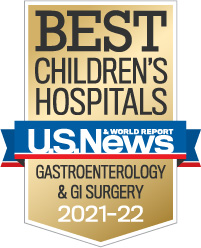Cleveland Clinic Children's Outcomes
Pediatric Gastroenterology
Pediatric Endoscopic Procedures (N = 5368)
2017 - 2020
To assess pediatric endoscopy quality, the Department of Pediatric Gastroenterology, Hepatology, and Nutrition reviewed the records of all patients undergoing endoscopic procedures in 2020 performed in the endoscopy suite, in the operating room, and at bedside. These procedures were then compared with those done in 2017, 2018, and 2019. Most procedures were done under general anesthesia, which was administered by a pediatric anesthesiologist. The department evaluated:
· The rate of unplanned emergency department (ED) referral or hospital admission following the procedure
· The occurrence of serious complications that resulted in prolonged hospitalization, transfusion, transfer of care to a higher level such as an ICU, or death
| 2017 | 2018 | 2019 | 2020 | |
|---|---|---|---|---|
| Total procedures: endoscopy, colonoscopy, and therapeutic, N¹ | 1179 | 1500 | 1518 | 1171 |
| Total patients undergoing endoscopic procedures, N | 708 | 1023 | 960 | 779 |
| Reported symptoms postprocedure resulting in ED² evaluation, N (%) | 6 (0.8) | 9 (0.9) | 8 (0.8) | 1 (0.1) |
| Unanticipated admissions < 7 days postprocedure, N (%) | 3 (0.4) | 1 (0) | 2(0.2) | 0 (0.0) |
| Complications < 7 days postprocedure, N (%) | 0 (0.0) | 0 (0.0) | 0(0.0) | 0 (0.0) |
¹N=number
²ED = emergency department

Children and adolescents undergoing pediatric endoscopic procedures did well, with less than 1% reporting post procedure symptoms requiring ED evaluation or admission. In 2020, no endoscopic procedures resulted in serious complications . The rate of complications is less than published complication ranges of 0.63% -2.3% for pediatric endoscopic procedures.¹²³


